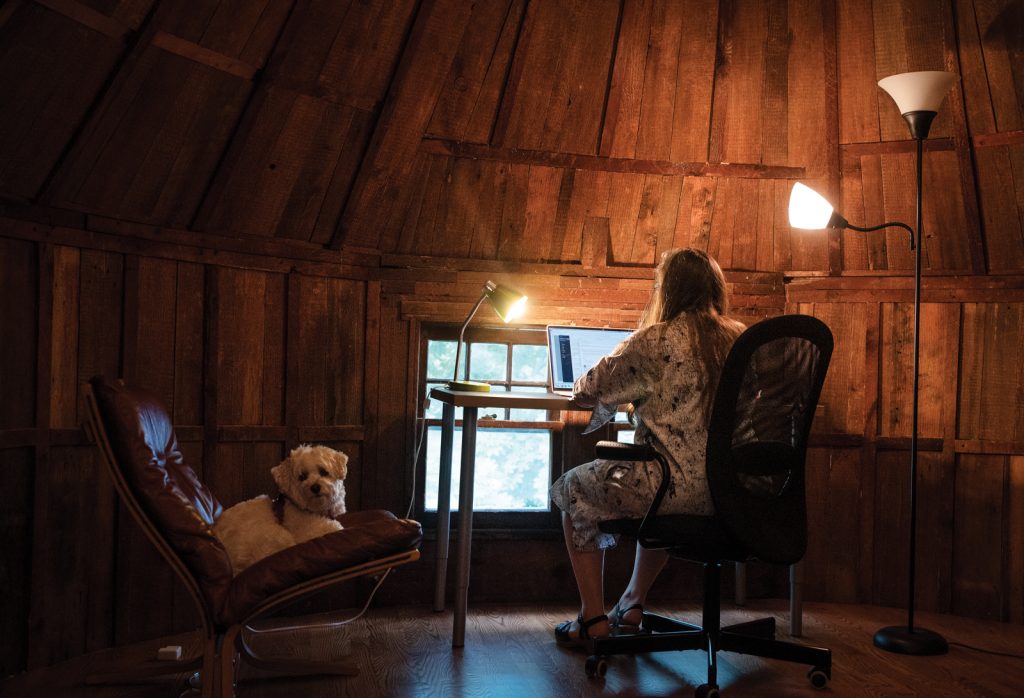Ever since I was 18 and my father was diagnosed with cancer, I felt I could not pray for an outcome. When my father got his diagnosis, and already had stage four cancer, I was pretty sure he would die in the near future. He could barely walk. To pray for his miraculous recovery when I was an agnostic was not possible, but even as someone raised Catholic, it felt ignoble, blasphemous. I should pray, I thought, for the courage to accept his sickness. I should pray for his peace of mind, but not for an outcome. In the back of my mind, I knew, if I prayed for an outcome and miraculous return of health that did not come, it might tip the balance of my faith which was already not sturdy. It would turn me from an agnostic to an atheist. No, God does not intervene in bodily affairs, I thought, as a teenager.
As a grown-up—when my face was not getting better after being diagnosed with Bell’s palsy, a paralysis of the seventh cranial nerve—I felt that I could not pray to God for my face to get better. Not only did it seem faithless, it seemed vain, considering all the trouble of the world.
I refused to think of prayer as gambling. Like: please, God, let my dice roll a three and not a six. Being raised Catholic, one thinks one can even get in trouble for praying wrong. Flannery O’Connor wrote in her prayer journal:
My dear God, It takes no supernatural grace to ask for what one wants and I have asked You . . . but I don’t want to overemphasize this angle of my prayers. Help me to ask You, oh Lord, for what is good for me to have, for what I can have and do Your service by having. I have been reading Mr. Kafka and I feel his problem of getting grace.
The hope to obtain grace—something that cannot be gotten—can it even be asked for?
***
I spoke to a theater colleague recently who had been through hell when her baby granddaughter died. She said she was disappointed with some friends and grocery store acquaintances who kept saying, “I cannot imagine what you are going through.” My colleague said she thought, “Well, you could try. You could try to imagine. Then you could at least say instead: I can only imagine what you are going through.” This felt like an important moral distinction.
I can only imagine.
I remember when my father was diagnosed with cancer, he went from being a healthy, athletic 52-year-old to an invalid in a matter of days. One day, my mother was pushing him gingerly in his wheelchair down the block in front of our house. It hurt his back terribly when the wheelchair went over a bump in the sidewalk, and he cried out in pain. So my mother simply turned the wheelchair around and went back home.
A neighbor who saw us out walking said later to my mom, “I don’t know how you’re doing it. You’re so brave. I cannot imagine what you’re going through.”
My mom said that she didn’t feel particularly brave; it was a nice day, so she was taking my father for a walk. My neighbor’s polite expression of empathy was, in a way, a negation of the experience of being inside illness. A boundary that many people do not wish to cross.
But don’t we need to cross over? Is this not a moral imperative, for art, but also for social discourse? Don’t we need to imagine people different from ourselves, people whose experiences we can only imagine?
***
Is the self the face? A person, their personhood, comes to be associated with their face. It is our signifier for identity. A person is not their arms, or their legs, but a person is their face. But what if we are not even our faces?
I read that Shantideva, the 8th-century Buddhist monk, once wrote: “The teeth, the hair, the nails are not the ‘I’…If such a thing as ‘I’ exists indeed then terrors will torment it. But since no self exists at all, what is there left for fears to terrify?”
***
One day, commuting to teach in New Haven, I was standing in Penn Station, reading Thomas Merton, when I ran into a monk in saffron robes. It was, in fact, Lama Pema, a Tibetan monk I’d met when rehearsing my play The Oldest Boy at Lincoln Center Theater.
We were happy to see each other, and we rode together from New York to New Haven. He was riding to Vermont where he was giving a teaching. I could not turn from his gaze on the train, so direct and present it was. Lama Pema turned small talk into dharma talk and said to me over and over, not necessarily knowing about my Bell’s palsy, but possibly observing it: “You can always choose to smile, no matter what. It is always a choice to smile.”
This felt so different from being instructed to smile. It was not a directive, it was a summoning. There is a concept in Buddhism of coming to know, through meditation, your original face. The 13th-century Chinese Zen master Mumon put it this way:
You cannot describe it or draw it,
You cannot praise it enough or perceive it.
No place can be found in which
To put the Original Face;
It will not disappear even
When the universe is destroyed.
I had been so busy looking for my old face, I forgot to look for my original face.
♦
Adapted from Smile: The Story of a Face by Sarah Ruhl © 2021 Sarah Ruhl. Reprinted by permission of Simon & Schuster, Inc.
Thank you for subscribing to Tricycle! As a nonprofit, we depend on readers like you to keep Buddhist teachings and practices widely available.
